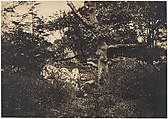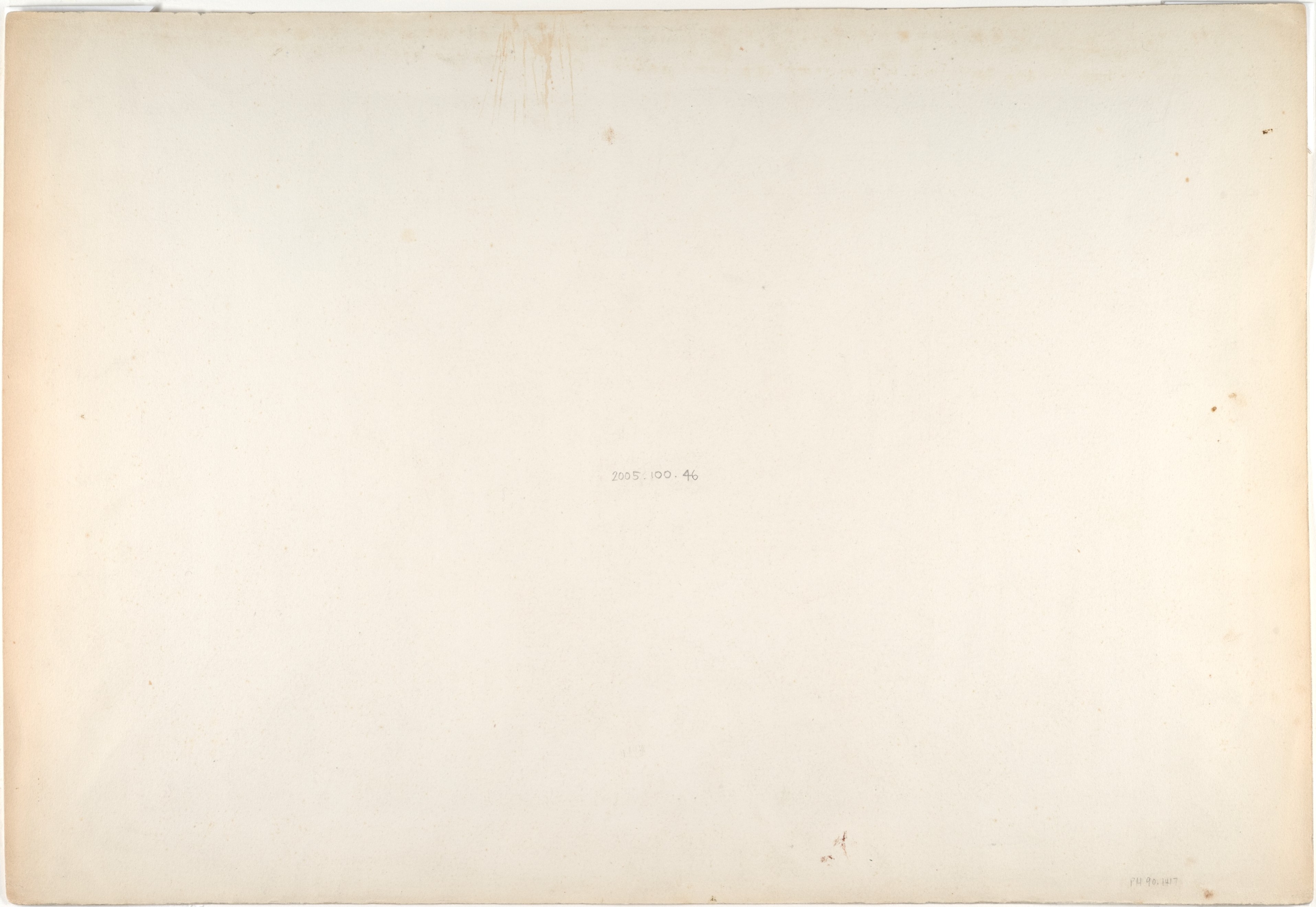Chêne dans les rochers à Fontainebleau
Gustave Le Gray French
Not on view
A locus of artistic activity in the second quarter of the nineteenth century, the Forest of Fontainebleau--and in particular the small town of Barbizon that lay within it--was home and muse to dozens of plein-air painters, including Corot, Daubigny, Diaz, Millet, and Rousseau. Comprising forty thousand acres, the forest was crisscrossed by footpaths and horse tracks and dotted with ancient oaks and anthropomorphic boulders christened with heroic and fanciful monikers. In 1849 a new railroad line brought the forest within easy reach of bourgeois Parisians seeking a natural setting for picnics, promenades, and artistic inspiration. Among those who arrived that year was Gustave Le Gray.
Painters gravitated to Barbizon in retreat from urban, industrial life and in search of the spiritual and moral purity thought to be embodied in the natural countryside and in the manual labor of rural peasants. Trained as a painter, Le Gray followed in the footsteps of the Barbizon artists (and perhaps even in their company), surveying the slightly domesticated landscape and photographing sylvan scenes in the Bas-Bréau and along the Route des Artistes, depicted here. One senses, however, that it was the medium itself, more than the purported subjects, that Le Gray was exploring. The vegetation of the forest floor, the lichen-covered rocks, and the gnarled oak that rises from their midst emerge only gradually from the overall pattern of light and dark, softly rendered by the waxed paper negative invented by Le Gray. Although within a few years Le Gray would use photography for more practical applications--portraiture, art reproduction, and architectural documentation--these early pictures, by their very lack of useful purpose, assert Le Gray's ability to exploit the medium for artistic ends.
Due to rights restrictions, this image cannot be enlarged, viewed at full screen, or downloaded.
This artwork is meant to be viewed from right to left. Scroll left to view more.



